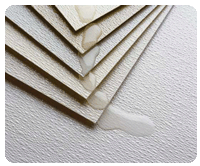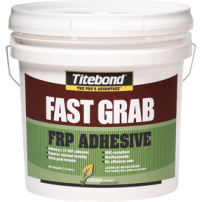FRP wall panels are great for protecting walls in mud rooms, shops, bathrooms – basically anywhere you need easy-to-clean wall protection. However, it’s not just as simple as nailing in a few sheets of panel, you will need to plan ahead for your project.
We recommend you get some graph paper first and get some measuring tape. Go to the room you’re going to put the sheets into and measure the width of all the walls. Make notes of how many inside or outside corners you have in the room at this stage. Now note that the FRP wall panel sheets are all going to be 4′ x 8′ or 4′ x 12′ in size. How are you going to orientate them? If you need only coverage right near the floor, you could potentially put the sheets sideways to save on the total the amount of sheets you require. Sketch that onto your graphic paper because you will need to know how many sheets to put on a given wall. The reason for this is that you require dividers (known as ‘j-trims’) for the spaces between the panels on a given length of wall.
All j-trims, inside and outside corners come in 10′ lengths. You need to consider that you may need extra of those to cut-to-size to fit into your project. Lastly, you need to consider FRP adhesive. Many jobs are not actually done by nailing in FRP panel to the wall. Instead a special FRP adhesive is used that comes in 4 gallon buckets. Each bucket covers 200 square feet of surface area. Based off of 4′ x 8′ panels (32 square feet) or 4′ x 10′ panels (40 square feet) add up the total square footage of your panels divided by 200 and then round up…That’s how many buckets of FRP adhesive you require. Also factor in you will want to have a trowel to spread the adhesive onto the panels.
At this point you should be ready to quote! You now know 1.) how many panels you need 2.) how many j-trims/inside/outside corners you need along with 3.) required adhesive. You’re set to purchase the material and get started!





 Although Redco™ FRP Panels are traditionally used in food processing plants, hospitals and restaurants, they also can be used at home to protect your walls from the scratching claws of pets and active children wielding felt tip pens.
Although Redco™ FRP Panels are traditionally used in food processing plants, hospitals and restaurants, they also can be used at home to protect your walls from the scratching claws of pets and active children wielding felt tip pens.